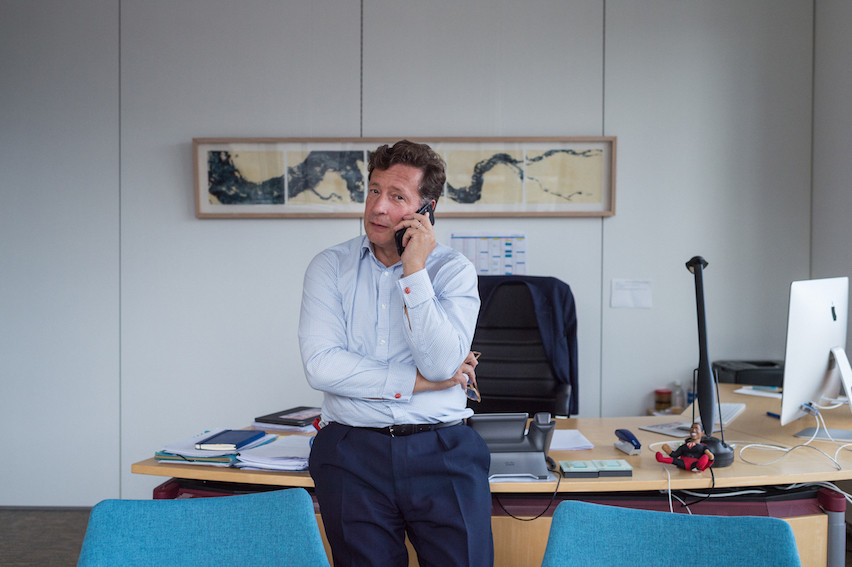Before 16 March, there was no “typical day” at the office for Nicolas Mackel, CEO of the state-backed promotion body Luxembourg for Finance. When not jetting abroad, attending business lunches, speaking engagements or networking events, he’d be in his Kirchberg office, a 30-minute commute from home.
“My new typical day starts in Luxembourg and ends in Luxembourg,” he told Delano of the difference during an interview in early September. Mackel returned to his private office in late April, arriving at work at the same time as pre-lockdown, around 7:30 a.m. However, with quieter roads, it took him just ten minutes to get in. He also spends less time getting ready as he no longer wears a tie. Being office-bound has enabled him to focus on projects that had been lingering on his to-do list, such as launching podcasts and webinar series.
Colleagues
On any given day he’s joined in the office by between 40% and 60% of the team. Staff, who returned to the office in June, work on a rotation system, arranging their schedules between themselves so that, for example, only two staffers who share a space for four people are there on the same day. “We have never been the full team back in the office since March.” Some employees with health or family concerns have remained on telework.
“Those people that come back, I think, are the people that, just like me, [wanted] to come back,” said Mackel. “We didn’t force anybody to come back. We didn’t ask them to come back. We always left them the option of remote working.”
Workplace
Since the pandemic, the offices have been certified by the Occupational Health Association for the Tertiary and the Financial Sector (ASTF) as a “working environment safe for covid”. This means, for example, plexiglass partitions are set up, employees wear a mask everywhere but at their own desk, and meetings with more than four people are held on Webex.
Workflow
Mackel was eager to return, partly because “there are too many distractions” at home. He found it “very difficult to [put down] a good book without reading another ten pages”, he says. “I myself, if given the opportunity to work from home or from the office, will prefer to work from the office because simply it’s a question of being able to concentrate. Maybe it’s a question of discipline, which I absolutely lack. But primarily, as the leader of the team, I thought, I should be here all the time, even if the team is not here all the time. They know where to find me” when they have a question.
In addition, “physical interaction with colleagues, to me, is something extremely important,” Mackel stated. He reckons that communication is more effective and efficient face-to-face compared to multiple email rounds. Still missing from the equation are the spontaneous, informal exchanges with colleagues and with the other tenants in the same building. “We used to bump into each other” on a regular basis, but social distancing rules have put a damper on that.
